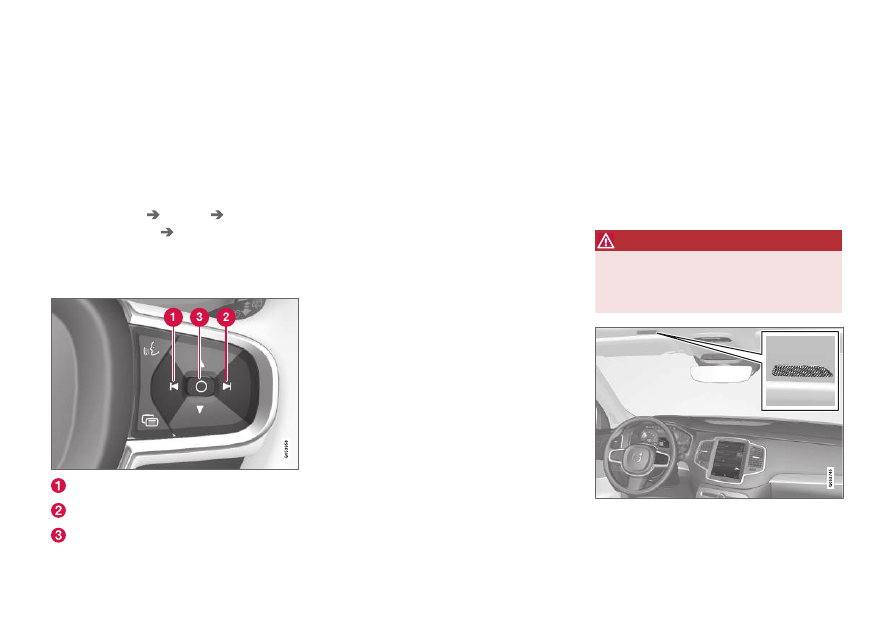Volvo XC60 Twin Engine (2019 year). Instruction - part 8

DISPLAYS AND VOICE CONTROL
}}
* Option/accessory.
145
Calibrating the horizontal position
If the windshield or display unit has been
replaced, the head-up display's horizontal posi-
tion may need to be calibrated. Calibration means
that the projected image is rotated clockwise or
counterclockwise.
1. Tap
Settings
in the center display's Top
view.
2. Select
My Car
Displays
Head-Up
Display Options
Head-Up Display
Calibration
.
3. Calibrate the horizontal position of the image
using the right-side steering wheel keypad.
Rotate counterclockwise
Rotate clockwise
Confirm
Related information
•
•
Activating and deactivating the head-up dis-
play* (p. 143)
•
•
Storing positions for seats, mirrors and head-
up display* (p. 186)
Voice control
15
The driver can use voice commands to control
certain functions in the media player, a
Bluetooth-connected phone, the climate system
and the Volvo navigation system*.
Voice commands offer extra convenience and
help minimize distractions so drivers can concen-
trate on driving and keep their attention on the
road and traffic situation.
WARNING
The driver is always responsible for ensuring
that the vehicle is operated in a safe manner
and that all applicable traffic regulations are
followed.
Voice control microphone
Voice control is carried out as a dialog, with spo-
ken commands from the user and verbal respon-